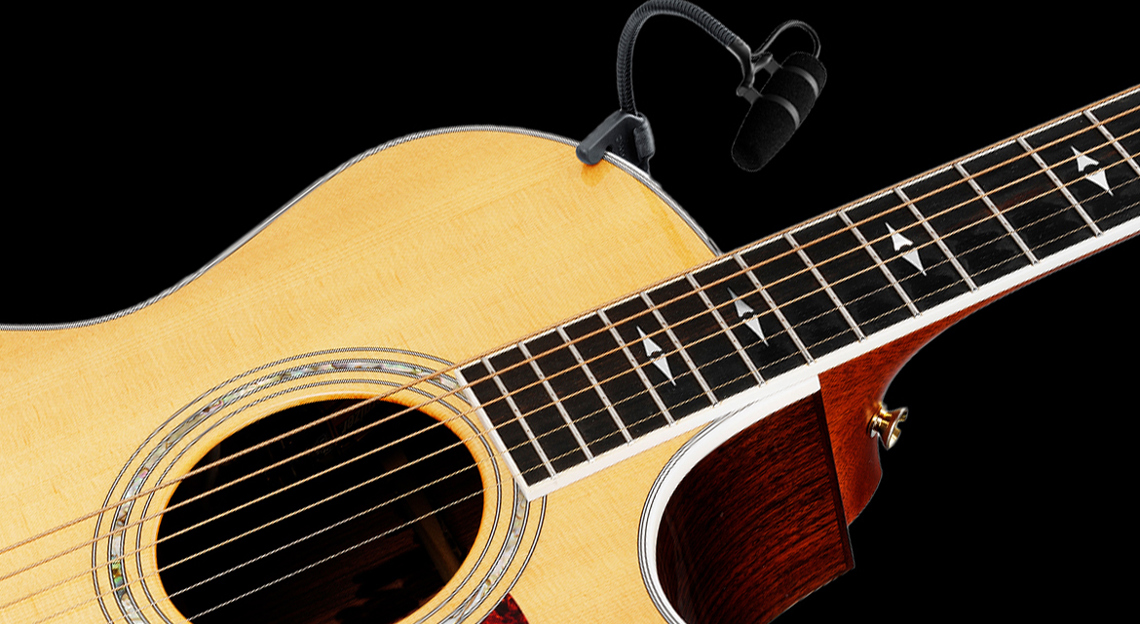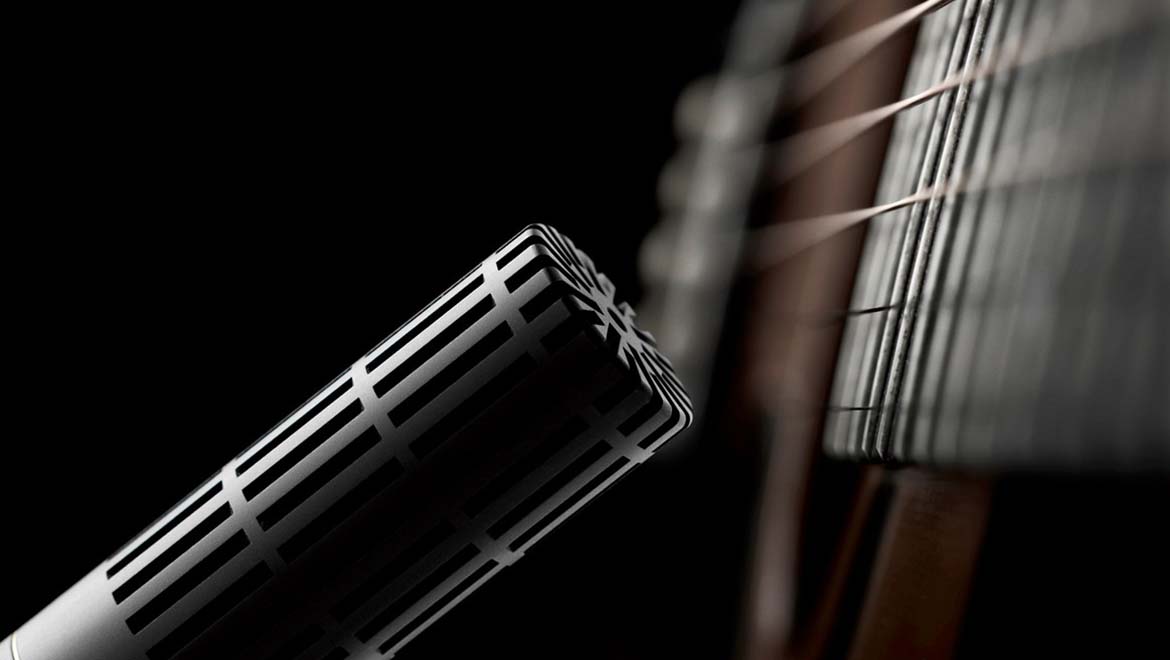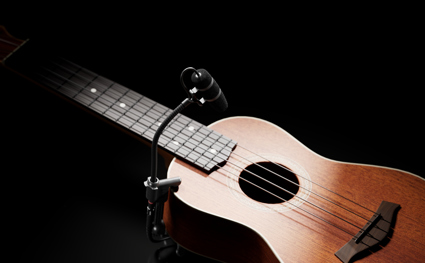How to mic an acoustic guitar
Guidelines for miking an acoustic guitar with DPA Microphones.

Please remember, great sound is subjective and the miking methods described in this article are suggestions only. Try these methods out, but make sure to listen and choose the best solution for your specific situation.
Close miking an instrument is often considered to be a compromise to the instrument’s true acoustic sound. An instrument’s sound is usually designed to be experienced at a distance so that all the different elements of the sound are naturally blended into a perfect harmony. Yet often, mounting a microphone directly on the instrument is the most practical solution.
Finding and placing guitar microphone in the instrument’s sweet spot – or your preferred location, can be a challenge. Keeping it there can be even more challenging, especially if the instrument is moved. For this reason, close-miking requires a dependable mounting solution.
The instrument
The overtones and the many fine details of any acoustic guitar require a microphone that handles fast transients and high frequencies. It also needs to have a high level of accuracy as well – on- and off-axis.
Acoustic guitar microphone positioning
The spot between the fret board and the sound hole is a good starting position to mount a guitar microphone. This position represents most of the elements of the guitar sound we want to capture – low end as well as ‘bite’ when the strings are picked or strummed.
If you prefer more volume, positioning the mic closer to or pointing at the sound hole is ideal. Twisting the gooseneck horizontally toward the hole can do this.
Types of acoustic guitar microphones
Omnidirectional (pressure) microphones have the great advantage of picking up sound evenly from all directions (although some “omnidirectional” microphones are slightly directional at the highest frequencies). Using an omnidirectional guitar microphone is appropriate when you want to pick up the full sound of the instrument and you can maneuver it (using a gooseneck) a short distance away from the instrument.
Error loading Partial View script (file: ~/Views/MacroPartials/TaggedProducts.cshtml)There are many sound sources on the acoustic guitar. Due to its size there are several good spots to pick from. Using omnidirectional microphone – like the or the 4061 Miniature Omnidirectional Microphone – allows you to pick any one place, close to or, by using a gooseneck, at a short distance from the instrument. Using an omnidirectional microphone ensures the sound will not lack of low-end due to the proximity effect as when using directional microphones. Proximity effect is an increase in bass or low-frequency response when a sound source is close to a microphone.
Error loading Partial View script (file: ~/Views/MacroPartials/TaggedProducts.cshtml)Using a directional microphone like the 4099 CORE+ Instrument Microphone or the 4011ES Cardioid Microphone has the advantage of being able to focus on the sound of the key instrument, isolating it from surrounding sound sources, such as other instruments onstage or the PA system. On the other hand, directional microphones suffer from the proximity effect and therefore require more adjustment to find the preferred position. Moving acoustic guitar microphone close to the instrument will increase the low-end response and might be desirable.
Bear in mind that the acoustic guitar reacts as a reflective surface. The incoming sound from other sources (instruments, PA system) might reflect off it and enter microphone from the front even if the microphone is pointing away from the source.
Tip: If the guitar player prefers to use stage monitors, place the microphone on the body of the guitar underneath the fret board and point the directional microphone upward, away from the monitor. This will minimize the bleed from the drum sound reflection off the guitar. Twist the guitar mic horizontally to achieve the desired blend of the fret board and the sound hole.

Acoustic guitar mic placement
All of the above-mentioned acoustic guitar microphones can be placed either on a microphone stand or directly on the instrument using the appropriate microphone mount.
Error loading Partial View script (file: ~/Views/MacroPartials/TaggedProducts.cshtml)A great close-miking mount is the GC4099 Clip for Guitar, which is sturdy and made to stay in place in almost any position. It fits over the body of guitars with various widths due to its flexible design. The clip works together with a number of our goosenecks allowing you to not only place the microphones according to your taste but also taking the application and the surrounding noise into consideration. The goosenecks are extremely flexible and can be slightly bent in order to position the microphone as needed.
Error loading Partial View script (file: ~/Views/MacroPartials/TaggedProducts.cshtml)The GC4099 Clip for Guitar works with the GSM4000 Gooseneck Shock Mount, the GM1600 Gooseneck mount for miniature mics and the 4099 CORE+ Instrument Microphone.








